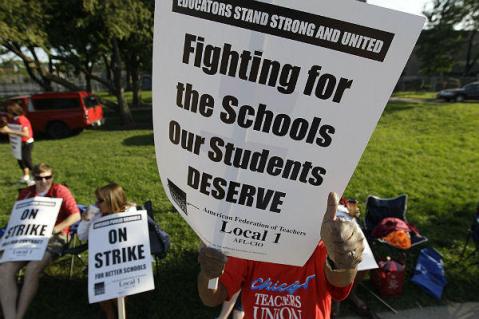The battle against teachers and their unions seemed to crescendo last year during Chicago’s teacher strike. The mainstream media had a field day blaming those “lazy teachers” and their “big unions” for the problems facing Chicago’s public school system, the nation and America’s ability to compete in the world. In New York State, the fight against teachers is getting less press coverage but is just as political, ill conceived and mean spirited.
Here, by law, the state’s school districts had to create and gain state approval for new teacher evaluation systems. Without that, they will lose some state funding. In the new formula, twenty percent must be based on locally negotiated terms, sixty percent on observation and twenty percent on what is known as “high stakes” state tests. There are all kinds of problems with this formula, but of particular concern is the weight and credibility the state is giving to standardized tests as a measure of teacher success.
The assumption, of course, is that if we can hunt down which students do not perform well on these tests, we will be able to locate failing teachers. If this doesn’t sound wrongheaded on its face, let me explain further. For years researchers have been arguing that teachers are not at the root of growing gaps of achievement in our nation’s schools. The problem is much more complicated then “bad teachers.” This point was confirmed in a recent New York Times article by Sean Reardon that reveals the class dimension of our achievement gap. Yet it’s clear that attacking bad teachers is so much simpler political formula than fixing fundamental societal problems and addressing class inequities.

Now the Common Core curriculum is offering the anti‑public school forces more fuel in their fight against teachers since tests based on these standards persist in teachers’ performance formulas despite a lack of evidence that they have any value. New York State recently adopted new national learning standards based on the principle of the Common Core. On the surface they actually seem reasonable. But in typical educational reform style, they are being implemented in a dictatorial, top-down manner. In New York State, the current adoption of these standards dovetailed with the state’s new evaluation system. This means that not only were all teachers developing new lessons and ways to convey concepts, they were up against an unknown state test that was responsible for a good chunk of their job security. Students just completed two weeks of this high-stakes state testing, and reported found the tests were harder than expected.None of this might matter at all except that Governor Andrew Cuomo can barely contain his politicized desire to prove his might against the state’s teachers. Back in January, Buffalo superintendent Pamela Brown tried to soothe the fears of Buffalo’s teachers and sent a memo to their union indicating that teachers would not be fired based on student test performance. In response state officials and Governor Andrew Cuomo sharpened their pitchforks and went on the warpath.Accusing the district of “fraud” and threatening to suspend their funding, Cuomo took to grandstanding as he fed the national narrative denigrating teachers and the unions that try to protect them.
On Tuesday, April 30th, Randi Weingarten, AFT president, called for a moratorium on the negative consequences of high-stakes testing. Weingarten did a good job of anticipating attacks on her as a big union bureaucrat opposed to teacher accountability. She laid out her support for developing a plan to implement the skills expected in a Common Core curriculum and then field testing the new process. Only then, Weingarten argued, should we consider bringing back high-stakes testing.
Kudos to Weingarten for her call for a moratorium on high-stakes testing. I just wish she would have gone even further. If we are serious about the state of education in this country and have a long-term interest in protecting our teachers from empty assaults, then high-stakes testing needs to go today, tomorrow and into the future.







